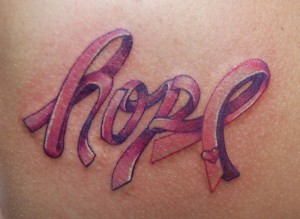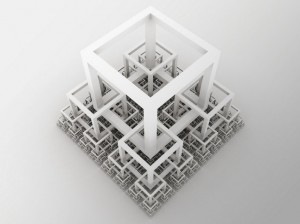These four elements form a powerful alliance to connect to your own capacity to heal, which is the essence of the solution to chronic pain. The DOC program is a framework that allows you to organize your thinking around these age-old concepts.
Awareness
You cannot successfully address any problem without understanding its root cause. But many people in pain stubbornly insist that, “The problem is that I am in pain,” and leave the solution to their health professionals. Unfortunately, the neuroscience research has not worked its way into mainstream care and they don’t understand the problem either. A recent paper that reviewed hundreds of studies stated that “chronic pain is a maladaptive neuropathological disease state.” (1,2,3) You cannot successfully solve a neurological problem with interventions aimed at structural issues. It is just not possible. This approach can’t and doesn’t work. That is why over 1 in 3 American adults are suffering from some level of chronic pain.
The body processes both emotional pain and physical pain by responding with stress hormones? Both kinds of pain are successfully treatable using similar strategies? Given a choice most of my patients would like to eliminate their emotional over their physical pain. Paradoxically, as the emotional pain drops, so does the physical pain. It doesn’t work the other way around.
My friend, Fred Luskin, author of Forgive for Good, pointed out that the human body is designed for survival, not necessarily for quality of life. All stress–real or imagined–is perceived as a threat and triggers your body to secrete adrenaline and cortisol. If you are under constant stress you may not even notice it, but your body will continue to secrete these chemicals that keep you in a continual “fight or flight” mode. You may be so used to being in this state, that it seems normal. The first step in healing is to become aware of your state of mind, life outlook and the effect they have on your body’s chemical balance. You have to understand your current state of being before you can change direction.
Hope
Hope is a critical component for thriving and living a meaningful life.
The observation and experience of core group of physicians and some other health care professionals is that of chronic pain is solvable. However, most physicians view it as a diagnosis to be managed. They simply haven’t been trained in utilizing an effective approach. They are almost as frustrated as their patients because they went into medicine to help people. Most of my patients have been to many providers and undergone multiple treatments without success. Additionally, since no one has provided them a plan should the treatment fail, there does not seem to be any way out. They feel trapped. The indescribable anger and frustration really crank up their stress chemical output, which increases the pain. How many times can you experience that kind of disappointment and still keep moving forward?
Dr. Viktor Frankl, author of Man’s Search for Meaning, was an Austrian psychiatrist who survived the WWII concentration camps. In his book, Dr. Frankl described how the worst part of the ordeal was not the indescribable physical suffering, but not knowing when if and when it was going to end.
Every week I see huge smiles on the faces of patients who are now pain free after years, sometimes decades, of pain. They cannot express their feeling in words, and I feel privileged that I have been able to provide a framework for them to pull themselves out of the hole. It began with awareness and hope.
Forgiveness
You will not heal while you hold on to anger, no matter how justified your anger might be. In fact, the more legitimate your anger, the harder it is to let it go. How can you move forward while hanging on tightly to the past? There are many resources out there to help you process your anger, and Stage 2 of this website is a solid starting point. The method does not matter as long as it enables you to truly let go. Remember, that to stimulate your brain to develop new pain-free pathways you have to move forward with or without your pain. I highly recommend Dr. Luskin’s book, Forgive for Good. When it entered the DOC program, I began to see many more patients free themselves from their pain. I consider acknowledging and processing anger the “Continental Divide” of chronic pain.
Several studies have shown that the vast majority of people in chronic pain still blame the person or situation that caused their injury. Interestingly, the person they blame the most is themselves. (4) When patients tell me they are not angry I often will ask them how critical they are of themselves. The most important person to let off of the hook is you. Knowing how anger obstructs healing and creates more pain, why do you insist on holding on to it? Is it really worth it?
Pain free after suffering for decades
Iris became pain free after decades of severe chronic pain. She had been on high-dose narcotics and using a walker. Now she is off her meds and walking unassisted. She wrote me, “The book you have written has saved my life. It is so much more than a book on back pain; it is back in control of my sanity, my depression, my self-worth, and my caring. I had no idea that anger was behind my anxiety and depression.” I have never met her but was able to talk to her a few months later. The key to her healing was awareness and letting go.
Play
Anger and play could not be farther apart. Anger disconnects us from others, from ourselves and from life; while sharing play is the essence of life.
Play is an essential aspect of child development. It is how we learn to constructively interact with others. Play areas of the brain are powerful and permanent circuits present in every human being; but they can get buried in the hubbub of daily life and the distraction of chronic pain. They’re present even in someone who did not develop an overabundance of them in childhood. But although play exists in all of us, they must be nurtured by making conscious choices to play. You do not need to continue to live your life in anger.
About ten years ago, I made a conscious decision to re-inhabit my play pathways when I chose to enjoy my day regardless of the circumstances. I am not always successful; but I committed to re-engaging with these circuits as quickly as possible when I wandered off course. Eventually, the labels “work” and “play” have merged into one. Play for me is curiosity, gratitude, awareness, letting go and simply deciding to enjoy and appreciate what I am doing at the moment.
Three of the principle methods for eliminating chronic pain are: 1) “de-adrenalizing” the nervous system, which slows the speed of nerve conduction and decreases the level of pain; 2) building new circuits that circumvent the embedded pain ones; and 3) shifting to new and more functional areas of my brain. Play does all of this.
I didn’t realize how powerful play pathways were until a five-day workshop I facilitated at the Omega Institute in Rhinebeck, New York. Fred Luskin worked with us during the forgiveness portion, and my wife and daughter helped us play together. Feeling safe and relaxed, we began to laugh. Many attendees went pain free within five days and have remained that way. Even I did not expect such a powerful outcome. The Cup Song
My book presents a robust framework to help you organize your thinking about pain. Using awareness, hope, forgiveness and play will allow you to discover your own way out. Give it a go. Those of us physicians who use some version of this approach feel strongly that the majority of our patients will significantly improve or free themselves from the grip of pain.
1. Davis KD and M Moayedi. “Central mechanisms of pain revealed through functional and structural MRI.” Journal of Neuroimmune Pharmacology (2013); 8: 518–534.
2. Baliki MN and A Vania Apkarian. “Nociception, pain, negative moods, and behavior selection.” Neuron (2015); 87: 474-491.
3. Tracey I and MC Bushnell. “How neuroimaging studies have challenged us to rethink: Is chronic pain a disease?” The Journal of Pain (2009); 10, 1113–1120.
4. Eccleston C, et al. “Patients’ and professionals’ understandings of the causes of chronic pain: blame, responsibility and identity protection.” Social Science & Medicine (1997); 45: 699–709.


